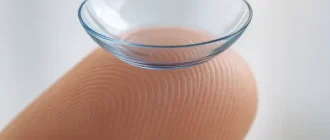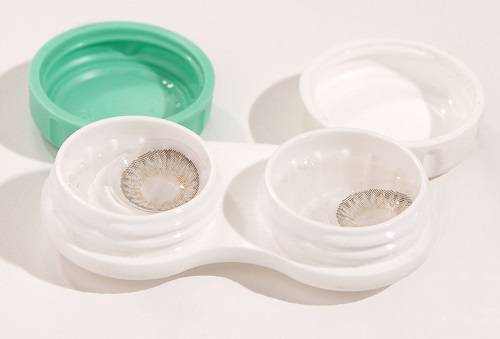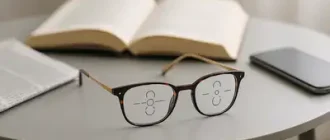Contact lenses are now widely preferred for correcting vision problems due to the convenience and freedom they provide by eliminating the need for glasses. Nevertheless, it is crucial to acknowledge that contact lenses may not be appropriate for everyone, particularly individuals at a young age.
Types of Contact Lenses
Various types of contact lenses are available, each possessing their own unique characteristics and benefits. The primary categories comprise of soft lenses and rigid gas permeable (RGP) lenses.
The majority of lenses used are soft lenses. They are created with a flexible material that enables easy adjustment and a pleasant fit. These lenses are offered in various options such as daily disposables, bi-weekly or monthly disposables, and extended wear lenses, which can be worn throughout the night.
On the other hand, RGP lenses are more rigid and provide sharper vision, making them suitable for individuals with astigmatism or higher levels of refractive error.
Additionally, specialty lenses such as toric lenses for astigmatism, multifocal lenses for presbyopia, and colored lenses for cosmetic purposes are also available.
Age Restrictions for Contact Lens Wear
The minimum age for contact lens wear varies and is typically determined by eye care professionals based on several factors.
Generally, children can start wearing contact lenses around the age of 10-12, although some may be ready as young as 8. The decision depends on factors such as maturity, responsibility, and the ability to handle and care for the lenses independently.
It is important for parents and guardians to consult with an eye care professional to assess if their child is ready for contact lenses.
They will consider the child’s individual circumstances, eye health, and any specific vision requirements. Proper education and guidance regarding contact lens care and hygiene are crucial to ensure the safety and comfort of young lens wearers.
Factors that determine the minimum age for contact lenses
Several factors come into play when determining the minimum age for contact lens wear.
Eye care professionals consider factors such as maturity, responsibility, and the ability to handle and care for the lenses independently. They will also evaluate the child’s eye health and any specific vision requirements.
Recommended minimum age for contact lenses based on eye development
Based on eye development, the recommended minimum age for contact lens wear typically ranges from 10 to 12 years old. This is because the eyes continue to grow and develop during childhood, and younger children may have difficulty handling and caring for contact lenses.
Nevertheless, children as young as 8 may be eligible for wearing contact lenses if they exhibit the essential qualities of maturity, responsibility, and the capability to adhere to proper lens maintenance and hygiene instructions. It is of utmost importance to seek advice from an eye care specialist to evaluate whether a child is prepared for contact lenses, considering their unique circumstances.
Contact Lens Safety and Hygiene
Maintaining contact lens safety and hygiene is essential for individuals of all ages who wear lenses. It is necessary to adhere to proper hygiene practices in order to prevent eye infections and other potential issues. Here are a few key safety and hygiene tips for contact lens wearers:
- Wash your hands thoroughly with soap and water before handling your contact lenses.
- Clean and disinfect your contact lenses as recommended by your eye care professional.
- Replace your contact lens case regularly to prevent bacterial growth.
- Avoid sleeping in your contact lenses unless prescribed by your eye care professional.
- Avoid swimming or showering with your contact lenses in to prevent contamination.
- Never use saliva or water to clean your contact lenses.
- Attend regular check-ups with your eye care professional to ensure the health of your eyes.
By following these safety and hygiene practices, contact lens wearers can enjoy clear vision and maintain healthy eyes.
Age-specific challenges and concerns related to contact lens wear
Age-specific challenges and concerns related to contact lens wear may vary depending on the age of the wearer. For young children, the main challenge is often their ability to handle and care for the lenses properly. They may struggle with inserting and removing the lenses, as well as following proper hygiene practices.
Teenagers may face challenges such as forgetting to clean their lenses regularly or being careless with lens care and storage. Additionally, some teenagers may be tempted to wear their lenses for longer periods than recommended, which can increase the risk of eye infections.
Benefits of contact lens wear at the appropriate age
Contact lens wear can provide numerous benefits for individuals at the appropriate age.
Firstly, contact lenses offer improved visual acuity, allowing wearers to see clearly without the restrictions that glasses can sometimes impose. This is especially beneficial for active individuals who participate in sports or other physical activities.
Contact lenses also provide a more natural field of vision compared to glasses, as they move with the eyes.
Additionally, wearing contact lenses can boost self-confidence and self-esteem, as they can enhance one’s appearance and eliminate concerns about the appearance of glasses.
Contact lenses also offer the convenience of not having to constantly adjust or clean glasses, making them a convenient option for those with busy lifestyles.





